The twenty-ninth edition of Artissima, the only fair in Italy exclusively dedicated to experimental, research and cutting-edge art, has opened in Turin. The curatorial theme chosen, with which the exhibitors were invited to confront at the time of the application, is Transformative Experience, a concept developed by the American philosopher Laurie Anne Paul to indicate those unpredictable events that confront us with the need to embrace the unknown and change, among which art occupies a privileged place for its power to transform emotions and thoughts, offering itself as a guide to face the challenges of the changing world. Luigi Fassi‘s debut in the role of artistic director has left the consolidated format unchanged, which provides for the subdivision of the participating galleries into the Main Section (dedicated to a selection of the most representative galleries on the international scene; this year 100 of 49 of which are not Italian), New Entries (for galleries that have been open for less than five years and present at the fair for the first time, which includes 15 galleries, 13 of which are foreign), Monologue/Dialogue (which includes emerging galleries presenting a monographic stand or a dialogue between two artists) and Art Spaces & Editions (which hosts galleries specialized in editions and multiples of artists, libraries, project spaces and non-profit spaces). The three curated sections of the fair were also maintained: Drawings (the only fair section in Italy dedicated to this medium, in which there are 10 foreign and 4 Italian galleries), Present Future (dedicated to monographic projects of emerging talents, with the goal of highlighting the new trends of the international art scene, in which we find 10 foreign galleries, only one Italian) and Back to the Future (centered on monographic projects by pioneers of contemporary art and which welcomes works created since 1960 until today). The numbers clearly show the programmatic intent to give the fair an international footprint: of the 174 exhibitors present, 59% are foreigners (from 28 countries, Germany and France in pole position), many of which are at their first participation, and the curatorial teams and selection committees also show a clear prevalence of professionals from abroad.
If this choice did not fail to arouse recriminations among those who were excluded despite having participated in previous editions or whose participation was subject to the remaining vacancies in a share in the first instance reserved for foreigners, this decision was necessary to offer to the public an enlarged overview of artistic production and circulation in the world. Of course, the qualitative question remains open, which nevertheless should be the main distinction to determine participation in a top fair, regardless of the “political” choice of setting certain objectives. With regard to quality, fans of contemporary art certainly cannot be disappointed, starting with the muscular display of valuable works by important artists by the most powerful galleries. We cite as an example the monumental triptych of the performance Imponderabilia by Ulay / Marina Abramović (Richard Saltoun Gallery), the beautiful monographic stand dedicated to the acid Post Pop of Norbert Bisky‘s mirror paintings by König Galerie, the perfect essentiality of Stop III, unique piece by Antony Gormley exhibited by Galleria Continua, which recently dedicated a spectacular monographic to the artist, Arcangelo Sassolino‘s monumental device for subjecting wood to tension (Repetto Gallery), the echo of whose action sometimes dominates the surrounding space. And again the imposing “x-ray” of the Pantheon in Rome by Vera Lutter (Alfonso Artiaco Gallery), the weary elegance of Pablo Bronstein in a very refined watercolor on large format paper that camouflages his architectural provocations in elegance (Franco Noero Gallery ), the visionary canvas, of environmental dimensions, 8 case by Mario Merz (Tucci Russo Studio for contemporary art), Marinella Senatore’s neon lights by in the Mazzoleni stand, increasingly precious in the mix of chromatic, formal and poetic research, Emma Talbot’s visionary canvases (Petra Rinck Galerie), an expression of her all-encompassing feminine cosmogony influenced by post-anthropocentric thought, and the spectacular environmental installations of paper drawings by William Kentridge with his unmistakable peremptory black mark, a great classic of Lia Rumma fair stands.
After this roundup of significant iconic presences, let’s get more into the theme of the fair by pointing out some research projects that show how art can really be a key for interpreting and reworking our present and the historical legacies of which it is burdened. First of all we mention the video series Running in Circles by Jeroen Jongeleen (Upstream Gallery), in which the artist seen from above walks in a circle on some the present and past battlefields, or the Harese film by Erkan Özgen (Zilberman Gallery), which shows a group of American veterans, recruited by the artist, intoning an unusual ensemble using their weapons as musical instruments. The video clip-style shooting, the stage presence of the protagonists, whose martial attitude does not hide a profound human frailty, and the convincing result also from the rhythmic and sound point of view arouse deeper reflections than the simple ironic provocation that emerges at first sight. The small black and white video From Heaven Above by Simon Wachsmuth, proposed by the same gallery, is also based on a performative reworking of the wounds of history. Here we see the artist performing martial steps in a recently dismantled military airport in Berlin, dressed as a soldier with a pig mask. the approaches of Paolo Cirio (Galleria Giorgio Persano) and Mark Dion (Galerie In Situ-fabienne leclerc, Grand Paris) are more conceptual: they are both engaged in the thematization of the ecological question, the first with a conceptual graphic that, without losing any of its rigor, borders on the abstract painting, the second with a surreal visual assemblage of textbook images. O Rapto de Europa (# 2) by Ricardo Jacinto (Galeria Bruno Múrias) tackles geopolitical issues: it is a sound installation composed of two facing pipes that reproduce the contours of the Greek and Turkish coasts, which become one sound box issued by the other, where the Ovid myth evoked by the title transcends the dispute over territorial waters. Teresa Margolles, spokesperson for the violent contradictions of Mexican society, in the photographic series El Capital te culea (Galerie Mor Charpentier) documents her intervention on some buildings in Santiago de Chile, where she appropriated the message “El Copital te culeo” (Capital Fucks You), found on a wall in Son Antonio de Tâchira, Venezuela, a city located on the border with Colombia, an obligatory stop for hundreds of thousands Venezuelans headed to the south of the continent, which later became the unofficial motto of Chilean protesters in 2019. Pauline Batista in the photographic series The Algorithm Will See You Now (GALLLERIAPIÙ) shows a sequence of black and white girl faces deformed by biomechanical hands to investigate the relationship between technology and the body in a fascinating osmosis between science fiction and information. A good omen for the ability to play down (or on the contrary ironic observation of the definitive collapse of the hope that the world will not end up self-destructing) the blessing Christ by León Ferrari (KOW Berlin), a discount figurine seated on a toy tank.
Info:
Artissima
4 -6/11/2022
www.artissima.art
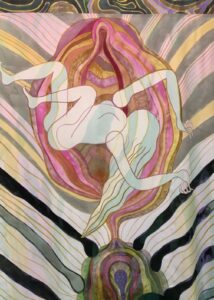 Emma Talbot, courtesy Petra Rinck Galerie
Emma Talbot, courtesy Petra Rinck Galerie
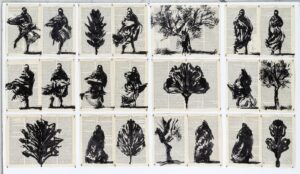 William Kentridge, Drawing for Waiting for the Sybil (Trees and Spinning Figures), 2019, courtesy Lia Rumma
William Kentridge, Drawing for Waiting for the Sybil (Trees and Spinning Figures), 2019, courtesy Lia Rumma
 Jeroen Jongeleen, Running in Circles, 2021, courtesy Upstream Gallery
Jeroen Jongeleen, Running in Circles, 2021, courtesy Upstream Gallery
 Erkan Özgen, Harese, 2022, courtesy Zilberman Gallery
Erkan Özgen, Harese, 2022, courtesy Zilberman Gallery
 Simon Wachsmuth, From Heaven Above, 2022, courtesy Zilberman Gallery
Simon Wachsmuth, From Heaven Above, 2022, courtesy Zilberman Gallery
 Paolo Cirio, Series: Climate Legal Evidence. 1988 Shell ocean acidification, 2021, print on canvas and acrylic, courtesy Galleria Giorgio Persano
Paolo Cirio, Series: Climate Legal Evidence. 1988 Shell ocean acidification, 2021, print on canvas and acrylic, courtesy Galleria Giorgio Persano
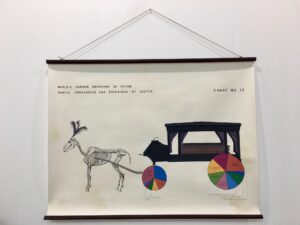 Mark Dion, Chart n.13, 2020, ink and acrylic on aged paper, courtesy Mark Dion & Galerie In Situ-fabienne leclerc, Grand Paris
Mark Dion, Chart n.13, 2020, ink and acrylic on aged paper, courtesy Mark Dion & Galerie In Situ-fabienne leclerc, Grand Paris
 Ricardo Jacinto, O Rapto de Europa (#2)|The Abduction of Europa (#2), 2022, light steel structures, electronics and audio feedback system, Galeria Bruno Múrias
Ricardo Jacinto, O Rapto de Europa (#2)|The Abduction of Europa (#2), 2022, light steel structures, electronics and audio feedback system, Galeria Bruno Múrias
 Ulay/Marina Abramović, Imponderabilia, 1977/2017, set of 3 gelatin silver print, text panel, copyright ABRAMOVIC LLC, courtesy Richard Saltoun Gallery
Ulay/Marina Abramović, Imponderabilia, 1977/2017, set of 3 gelatin silver print, text panel, copyright ABRAMOVIC LLC, courtesy Richard Saltoun Gallery
 Norbert Bisky, What Comes Next, 2021, on canvas on mirror, courtesy König Galerie
Norbert Bisky, What Comes Next, 2021, on canvas on mirror, courtesy König Galerie
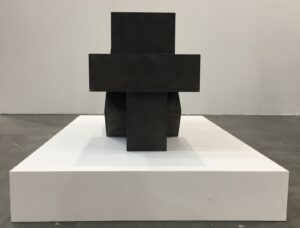 Antony Gormley, Stop III, 2021, ghisa, courtesy Galleria Continua
Antony Gormley, Stop III, 2021, ghisa, courtesy Galleria Continua
 Arcangelo Sassolino, Untitled, 2008-16, wood, hydraulic cylinder, electrical and hydraulic system, courtesy Repetto Gallery, London
Arcangelo Sassolino, Untitled, 2008-16, wood, hydraulic cylinder, electrical and hydraulic system, courtesy Repetto Gallery, London
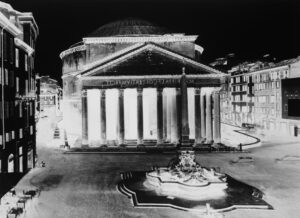 Vera Lutter, Pantheon, Rome, VI: July 15, 2020, unique silver gelatin print, courtesy galleria Alfonso Artiaco
Vera Lutter, Pantheon, Rome, VI: July 15, 2020, unique silver gelatin print, courtesy galleria Alfonso Artiaco
 Pablo Bronstein, Factories, ink and watercolour on paper, courtesy Galleria Franco Noero
Pablo Bronstein, Factories, ink and watercolour on paper, courtesy Galleria Franco Noero
 Mario Merz, 8 case, 1981/1982, charcoal, oil and acrylic painting on canvas, courtesy Tucci Russo Studio per l’arte contemporanea
Mario Merz, 8 case, 1981/1982, charcoal, oil and acrylic painting on canvas, courtesy Tucci Russo Studio per l’arte contemporanea
 Marinella Senatore, We Rise by Lifting Others, 2022, greeNeon and methacrylate mounted on a painted aluminum panel, courtesy Mazzoleni
Marinella Senatore, We Rise by Lifting Others, 2022, greeNeon and methacrylate mounted on a painted aluminum panel, courtesy Mazzoleni
 Teresa Margolles, El Capital te culea, 2019, series of digital prints on Hahnemuhle Photo Rag paper, 150 x 225 cm each, edition of 6 + I AP, courtesy mor charpentier
Teresa Margolles, El Capital te culea, 2019, series of digital prints on Hahnemuhle Photo Rag paper, 150 x 225 cm each, edition of 6 + I AP, courtesy mor charpentier
 Pauline Batista, The Algorithm Will See You Now, courtesy GALLLERIAPIÙ
Pauline Batista, The Algorithm Will See You Now, courtesy GALLLERIAPIÙ
 León Ferrari, Untitled, assemblage of objects, courtesy of the estate of León Ferrari and KOW Berlin
León Ferrari, Untitled, assemblage of objects, courtesy of the estate of León Ferrari and KOW Berlin
Graduated in art history at DAMS in Bologna, city where she continued to live and work, she specialized in Siena with Enrico Crispolti. Curious and attentive to the becoming of the contemporary, she believes in the power of art to make life more interesting and she loves to explore its latest trends through dialogue with artists, curators and gallery owners. She considers writing a form of reasoning and analysis that reconstructs the connection between the artist’s creative path and the surrounding context.


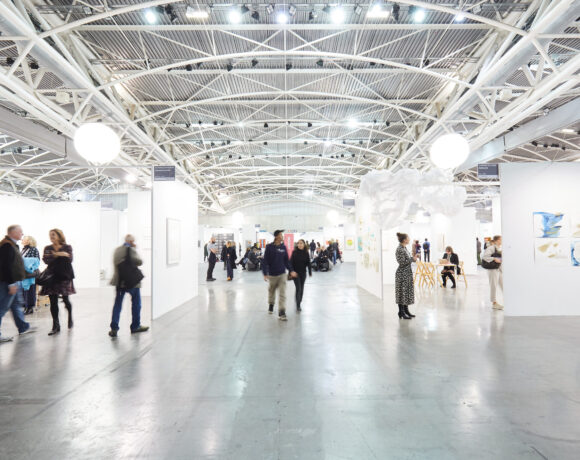
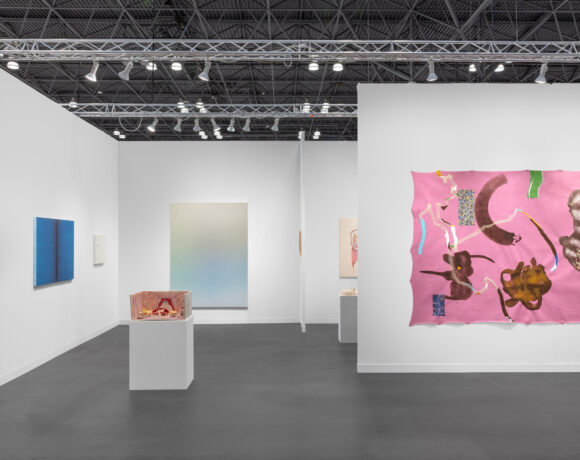
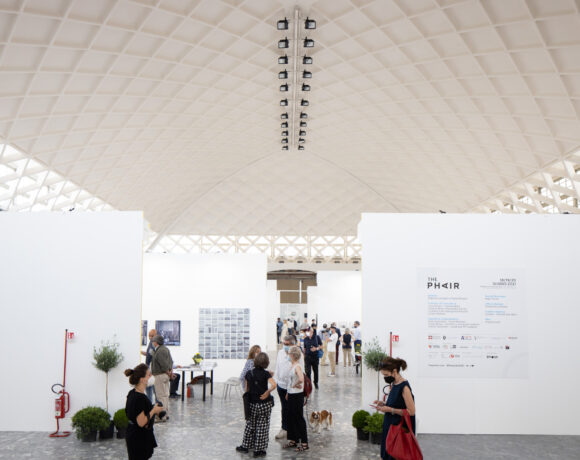

NO COMMENT